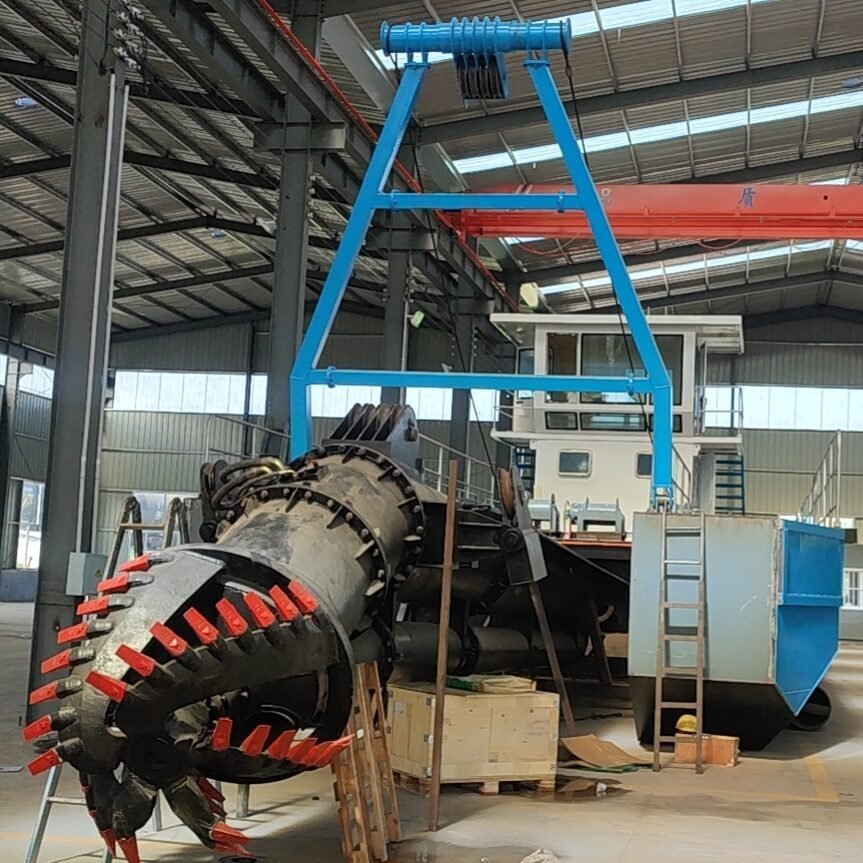
Keywords: Navigation Channel Maintenance, Dredging for Waterways , DREDGERS
Introduction to Navigation Channel Maintenance
Maintaining navigation channels and waterways is essential for ensuring the safe and efficient movement of vessels, supporting trade, and preventing flooding. Dredgers play a vital role in this process by removing sediment, debris, and other obstructions from the seabed and riverbed. This article explores the role of dredgers in maintaining navigation channels and waterways, highlighting the techniques and equipment used to keep these critical infrastructure elements in optimal condition.
The Importance of Maintaining Navigation Channels
Navigation channels are essential for the movement of ships, barges, and other vessels. Over time, sedimentation, erosion, and natural processes can cause these channels to become shallow, narrow, or obstructed, making navigation difficult or dangerous. Regular dredging is necessary to maintain the depth, width, and safety of these channels, ensuring that vessels can pass through without incident.
- Supporting Global Trade: Navigation channels are critical for global trade, as they provide the pathways for ships to transport goods between ports. Maintaining these channels is essential for the efficient movement of cargo, helping to reduce delays and costs for businesses and consumers.
- Preventing Flooding: Dredging also plays a key role in flood prevention by maintaining the capacity of rivers, estuaries, and other waterways. By removing excess sediment and debris, dredging helps to ensure that water can flow freely, reducing the risk of flooding during heavy rains or storms.
Dredgers Techniques for Navigation Channel Maintenance
Dredgers are the primary tools used to maintain navigation channels and waterways. Different dredging techniques and equipment are used depending on the specific requirements of the project, such as the type of sediment, water depth, and desired channel dimensions.
- Hydraulic Dredging: Hydraulic dredging is one of the most common techniques used for maintaining navigation channels. This method involves using a dredger to suction sediment from the seabed or riverbed and transport it to a disposal site or containment area. Hydraulic dredgers are particularly effective for removing loose or fine sediments, such as sand, silt, and clay.
- Mechanical Dredging: Mechanical dredging involves using excavators, cranes, or buckets to physically remove sediment and debris from the channel. This technique is often used for dredging hard or compacted materials, such as gravel or rock, and is ideal for projects requiring precise excavation or work in confined areas.
- Trailing Suction Hopper Dredgers (TSHDs): TSHDs are widely used for large-scale navigation channel maintenance projects. These dredgers feature suction pipes that collect sediment and store it in onboard hoppers. Once the hoppers are full, the material is transported to a disposal site or used for land reclamation. TSHDs are particularly effective for maintaining deepwater channels and handling large volumes of sediment.
Environmental Considerations in Channel Maintenance
While dredging is essential for maintaining navigation channels, it is important to consider the environmental impacts of these operations. Careful planning and the use of best practices can help to minimize harm to ecosystems and promote sustainable channel maintenance.
- Minimizing Sediment Dispersion: Dredging can cause sediment to become suspended in the water column, leading to increased turbidity and reduced water quality. To minimize this impact, operators can use silt curtains, sediment traps, and other containment measures to control sediment dispersion.
- Protecting Aquatic Habitats: Navigation channels often pass through sensitive aquatic habitats, such as coral reefs, seagrass beds, and wetlands. To protect these areas, dredging operations should be carefully planned to avoid disturbing critical habitats, and mitigation measures should be implemented to restore or create habitats where necessary.
- Monitoring Water Quality: Regular monitoring of water quality is essential during dredging operations to ensure that environmental standards are met. Operators should track parameters such as turbidity, dissolved oxygen levels, and pollutant concentrations, making adjustments to dredging practices as needed to protect water quality.
Case Studies of Navigation Channel Maintenance
Several notable navigation channel maintenance projects demonstrate the critical role of dredgers in keeping waterways open and safe for vessels.
- Panama Canal Maintenance: The Panama Canal is one of the world’s most important navigation channels, providing a shortcut for ships traveling between the Atlantic and Pacific Oceans. Regular dredging is required to maintain the canal’s depth and width, ensuring that large vessels can pass through safely. TSHDs and mechanical dredgers are used to remove sediment, debris, and rock from the canal, keeping it in optimal condition for global shipping.
- Mississippi River Dredging: The Mississippi River is a major transportation artery in the United States, serving as a key route for agricultural, industrial, and energy-related cargo. The U.S. Army Corps of Engineers conducts regular dredging operations to maintain the river’s navigation channels, using hydraulic and mechanical dredgers to remove sediment and debris. These efforts help to prevent flooding, support commerce, and protect critical infrastructure.
- Port of Rotterdam Maintenance: The Port of Rotterdam is one of the busiest ports in the world, handling millions of tons of cargo each year. To accommodate the large vessels that call at the port, regular dredging is required to maintain the depth and width of the navigation channels. TSHDs are used to dredge the channels, ensuring that ships can enter and exit the port safely and efficiently.
Conclusion: The Ongoing Need for Navigation Channel Maintenance
Dredgers play an essential role in maintaining navigation channels and waterways, supporting global trade, preventing flooding, and ensuring the safety of vessels. By using advanced dredging techniques and adopting sustainable practices, operators can keep these critical infrastructure elements in optimal condition while minimizing environmental impact. As global trade continues to grow, the demand for effective navigation channel maintenance will only increase, highlighting the ongoing need for skilled dredging operations and innovative solutions.

No responses yet